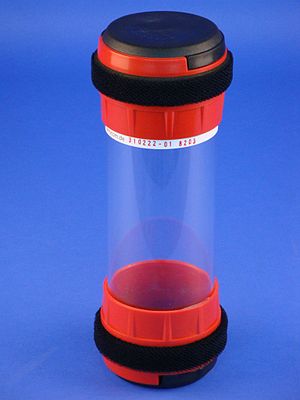
- Image via Wikipedia
A visionary idea for modernising the goods-distribution network
ENTHUSIASTS of the digital economy sometimes forget that bits are not everything. However important information is in transforming business, most of what is actually bought and sold is still physical goods, and those goods need to be delivered to the customer. Unlike information technology, though, freight transport has not evolved much during the past few decades. It takes only a few seconds to choose and buy something from an online store, but several days for it then to reach the purchaser. That process also burns oil, contributes to traffic jams and makes the planet’s atmosphere a little warmer by releasing carbon dioxide.
Freight transport could thus use some fresh ideas. Or at least a new version of an old idea. And that is exactly what Franco Cotana, an engineering physicist at the University of Perugia, in Italy, has in mind. He proposes to revive, with a modern twist, an extinct technology called the pneumatic pipe.
In the late 19th and early 20th century, underground tubes were used in many cities to speed up the transport of mail between post offices and government buildings. Letters were put into capsules, the capsules into the tubes, and compressed air was then used to push the capsules from one station to the next. It was not uncommon at the time to think that pneumatic post of this sort would develop into a wide network, like telephony or electricity. In 1900 Charles Emory Smith, then postmaster-general of the United States, wrote that by the end of the decade he expected the “extension of the pneumatic tube system to every house, thus insuring the immediate delivery of mail as soon as it arrives in the city”.
The reason this never happened, Dr Cotana observes, is that air compressors are expensive to operate and maintain, and the energy they produce dissipates quickly, so capsules can cover only short distances. But technology now exists to overcome those limitations.
Pipenet, a system Dr Cotana patented in 2003 and has been developing since then, is based on a network of metal pipes about 60cm (two feet) in diameter. Instead of air pressure, it uses magnetic fields. These fields, generated by devices called linear synchronous motors, both levitate the capsules and propel them forward. The capsules are routed through the network by radio transponders incorporated within them. At each bifurcation of the pipe, the transponder communicates the capsule’s destination and the magnets pull it to the left or the right, as appropriate. Air pumps are involved, but their role is limited to creating a partial vacuum in the pipes in order to reduce resistance to the capsules’ movement. This way, Dr Cotana calculates, capsules carrying up to 50kg of goods could travel at up to 1,500kph—so you could be wearing a pair of jeans or taking photographs with a new camera only a couple of hours after placing your order.








